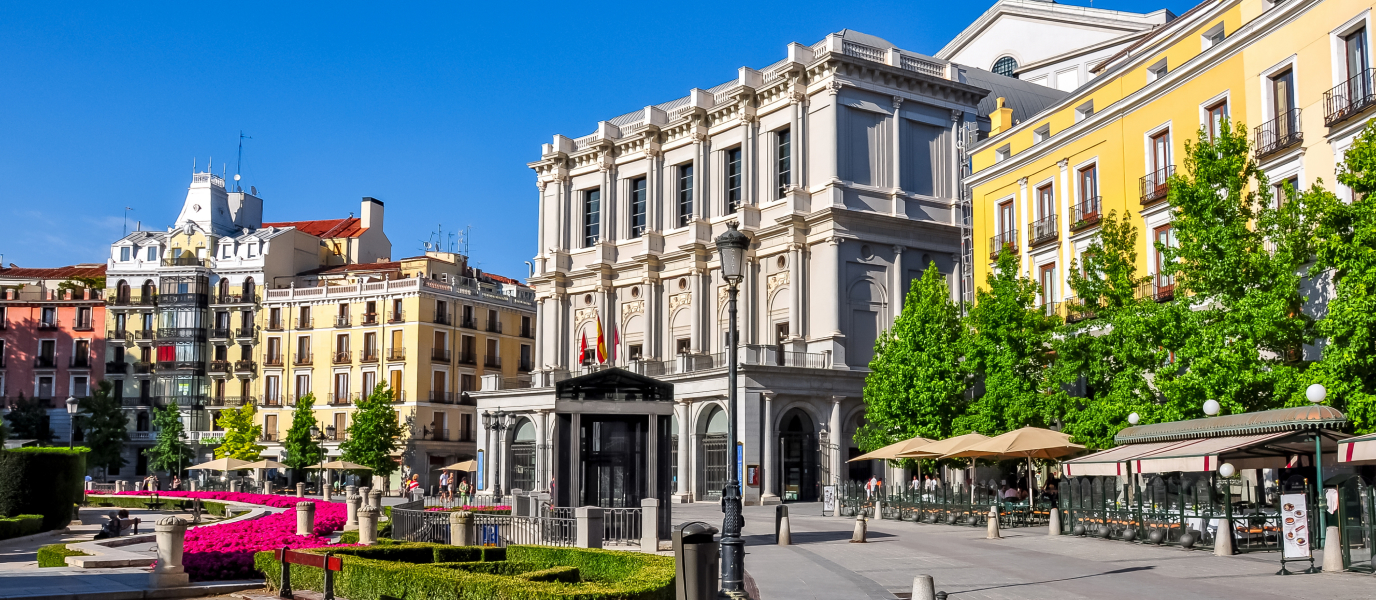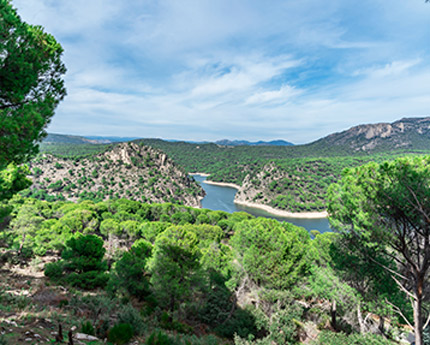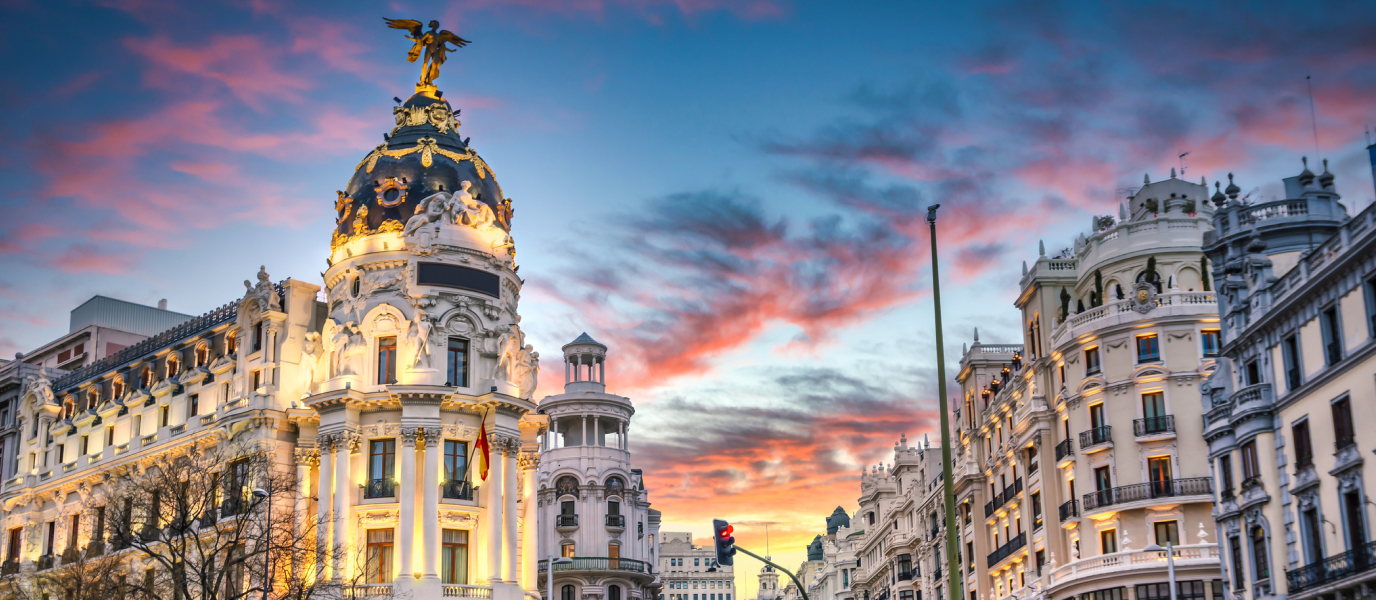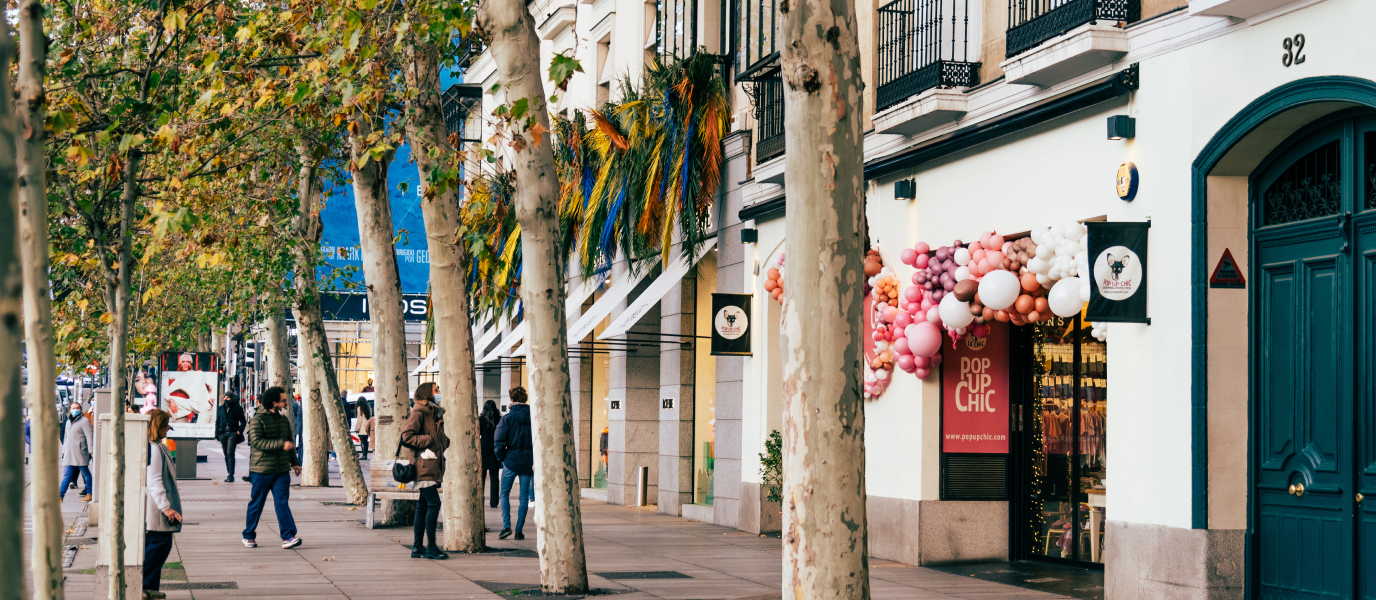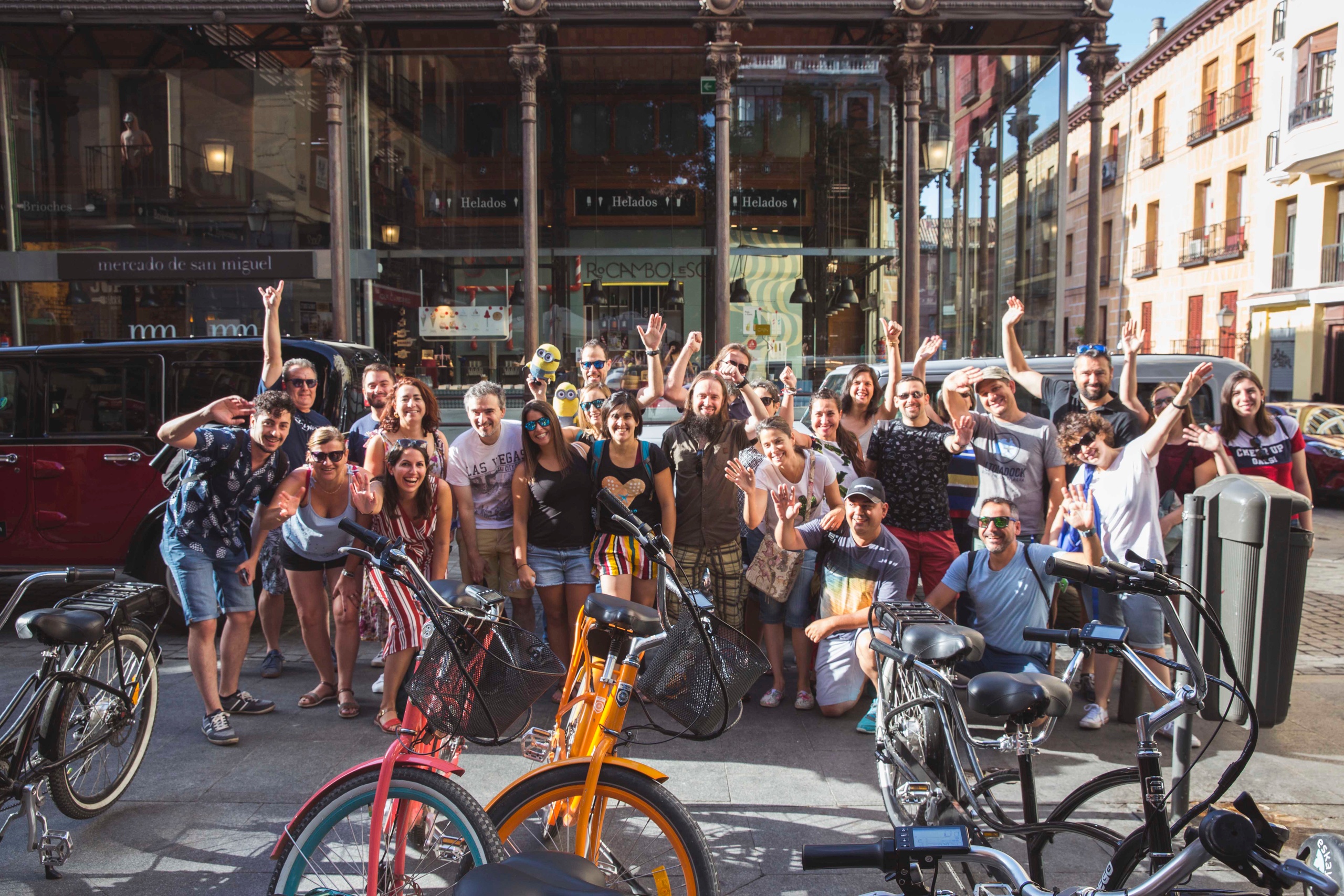“This square was created by order of Joseph I, King Plazuelas, in 1809, after the demolition of several buildings pertaining to the Royal Palace. It was designed by the architect Narciso Pascual y Colomer”. This inscription, engraved on the ground at the entrance of Plaza de Oriente on Calle Lepanto, tells of the origins of one of the most charming places in Madrid, where life seems to stand still and the sculptures speak in hushed tones about Spain’s history.
The architect who designed the Royal Palace, Giovanni Battista Sacchetti, had already designed a garden for the site in the eighteenth century, but it wasn’t until the reign of King Joseph Bonaparte when the first demolitions took place. King Plazuelas (meaning little plazas) was one of the monikers given to Napoleon’s brother for his penchant for tearing down buildings to create Parisian-style plazas (a nickname perhaps not as popular as Pepe Botella—Pepe being a short form of his first name and botella referring to the bottles that the King was reputedly fond of).
Plaza de Oriente, flanked by the Teatro Real
A few years later, King Ferdinand VII modified the project giving it a semi-circular shape and using the new opera theatre (which replaced the Los Caños del Peral Theatre) as an axis. In 1817, Isidro González Velázquez devised a plaza flanked by the Royal Palace and the new Teatro Real designed by Antonio López Aguado. However, it wasn’t until several years later when the design of Pascual y Colomer, as the inscription describes, could finally be enjoyed.
Madrid’s Plaza de Oriente was designed by Pascual y Colomer in 1844 during the reign of Queen Isabella II. The six symmetrical blocks were reduced to two, one on each side of the theatre, converting the space that the other four blocks were to occupy into gardens. As such, today we are able to enjoy the Plaza de Oriente Gardens (in the centre) and the Lepanto and Cabo Noval Gardens (on both sides), separated by twenty limestone statues representing former Spanish kings.
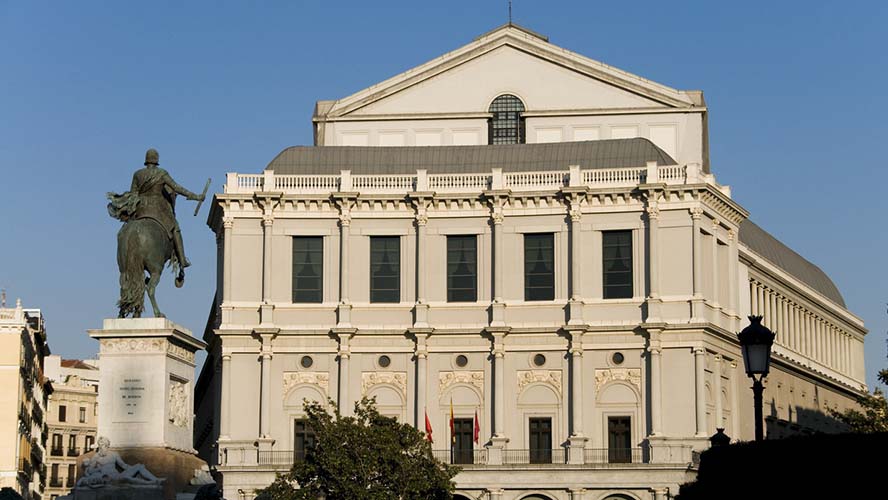
The first statue of a horse standing on its hind legs
Three years later the fountain that presides over the Plaza de Oriente Gardens, devised in grid form according to the nineteenth-century model, was designed with an equestrian statue of King Philip IV. Galileo Galilei provided the artist Pietro Tacca with calculations in order to die cast the first statue in the world of a horse standing on its hind legs, sculpted based on two portraits of the king painted by Velázquez. Tacca finished the work in 1640 and although it has been part of Madrid’s Plaza de Oriente since the nineteenth century, it previously stood in El Retiro Park.
The works were finally completed in the mid-nineteenth century according to the streets’ current configuration, along with seven parterres and lateral statues in 1941. The final remodelling by the architect Miguel de Oriol served to bury traffic from Calle Bailén underground in 1997, leaving the promenade in front of the Royal Palace free of cars and creating an underground car park for tourist buses and vehicles.
The Royal Palace of Madrid
As a matter of fact, another of the treasures of Madrid’s Plaza de Oriente lies beneath the ground: the remains of the eleventh-century Arab watchtower (you can see it when accessing the underground car park), which at the time stood outside of the city walls for keeping watch and protecting the area. However, without a doubt, the plaza’s greatest treasure lies above ground, among the buildings that surround the square. It’s no surprise that Joseph Bonaparte put forward the idea of clearing space to enjoy the grandeur of the Royal Palace, also known as Palacio de Oriente.
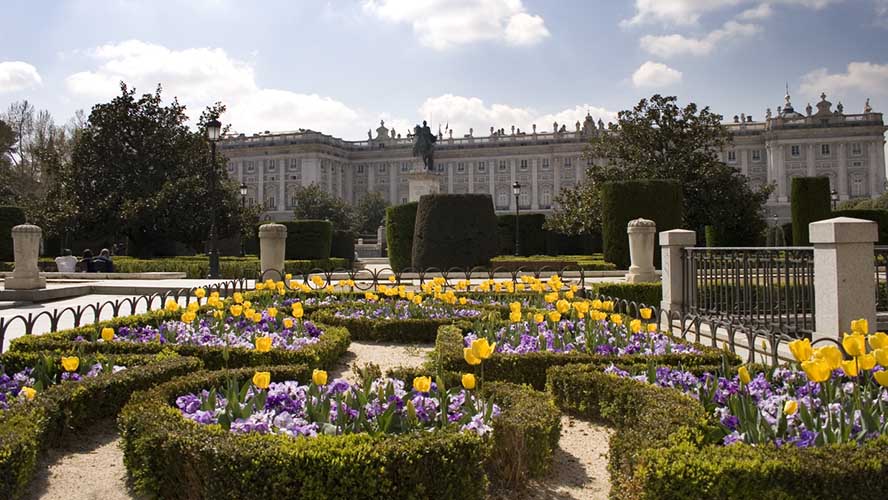
On Christmas Eve 1734, a fire destroyed Madrid’s former Alcázar (a Muslim-era fortress), which King Philip II had converted into the official residence of the Kings of Spain in 1561. King Philip V decided to build a new Royal Palace and commissioned Filippo Juvara, although he was to die before the first stone was laid. So, his disciple Giambattista Sacchetti took on the task of adapting the project and work began in 1738. The palace was completed 13 years later, but the first monarch did not move into the new residence until 1764. King Charles III, as well as King Charles IV, only lived in the Palacio de Oriente for eight weeks a year: in December, Easter and part of July.
The entire multi-storey building is formed of vaults with no wood used whatsoever in the structure. Of particular note are the frescos painted by the Venetian painter Giambattista Tiepolo, the German artist Anton Raphael Mengs and their Spanish disciples.
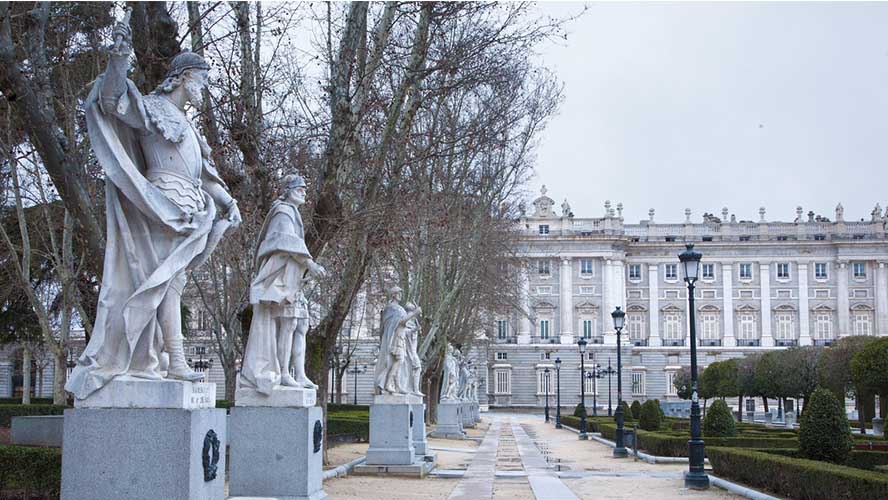
Doors and windows made from solid mahogany, rich Spanish marble used on portals and friezes, stuccos and frescos within the vaults… These are the hallmarks of the decoration chosen by Francesco Sabatini, the architect of King Charles III. We owe the important neoclassical features and pieces of French furniture to King Charles IV, whilst King Ferdinand VII was responsible for the collection of French chandeliers in bronze and glass. The most recent decorative refurbishment was under King Alfonso XII in 1879 and his converted rooms and the Royal Armoury form part of the rooms that can be visited.
The Solemn Changing of the Guard
The Royal Palace of Madrid continues to be the official residence of the King of Spain, who uses several rooms for his audiences. If no official act is being held, every first Wednesday of the month at midday (except in January, August and September) the Solemn Changing of the Royal Guard takes place on Plaza de la Armería, weather permitting. The one-hour-long spectacle is faithful to how it was performed during the reign of King Alfonso XII and King Alfonso XIII. What’s more, on Wednesdays and Saturdays from 11:00 AM to 2:00 PM (except during the summer months when it is reduced from 10:00 AM to 12:00 PM) another changing of the guard takes place every 30 minutes at the Príncipe Gate.
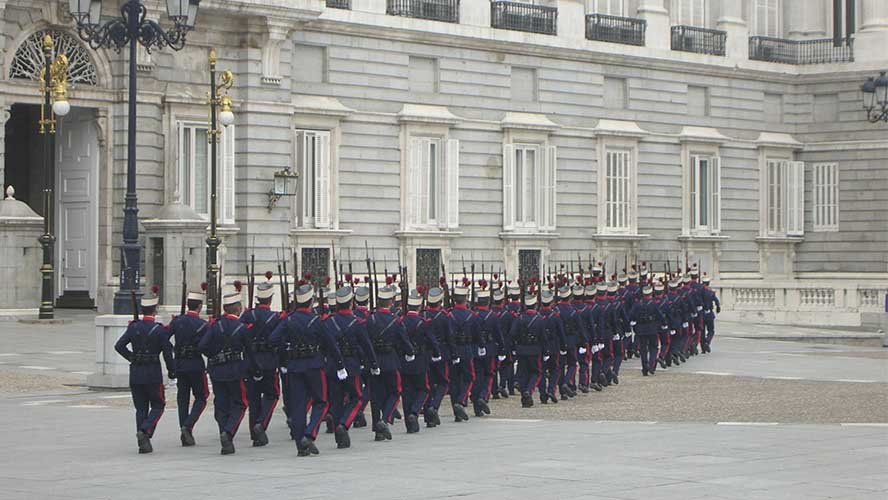
A break at the Café de Oriente
Just sitting under one of the plaza’s magnolia trees and watching the locals and tourists go by is worth the journey itself to this magnificent spot. You can also contemplate the palace’s balconies, which, not that long ago, hosted resounding speeches from another era, or recall the moment when Spain was moved by the then prince and princess’s shy kiss. La Almudena Cathedral, the Teatro Real, the Monastery of the Incarnation and Sabatini Gardens are four perfect excuses for losing yourself in the Plaza de Oriente and discovering details, such as the inscription that reads: “Here stood the Casa del Tesoro, where Giovanni Battista Sacchetti, the main architect of Madrid’s Royal Palace, lived and died in 1784”, found at number two on the plaza, next to the current Café de Oriente.
Located on the site of the former convent of Discalced Franciscans, the building was designed by the same architect that designed the Plaza de Oriente in the mid-nineteenth century and was renovated in 1983. With its thirties-style décor, the Café de Oriente boasts one of the best views in the city and serves food that fuses the traditional with the avant-garde all throughout the day: from a romantic breakfast, to dinner with live music, by way of a bistro lunch. All without leaving the Plaza de Oriente, this time east of the palace.





























































